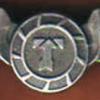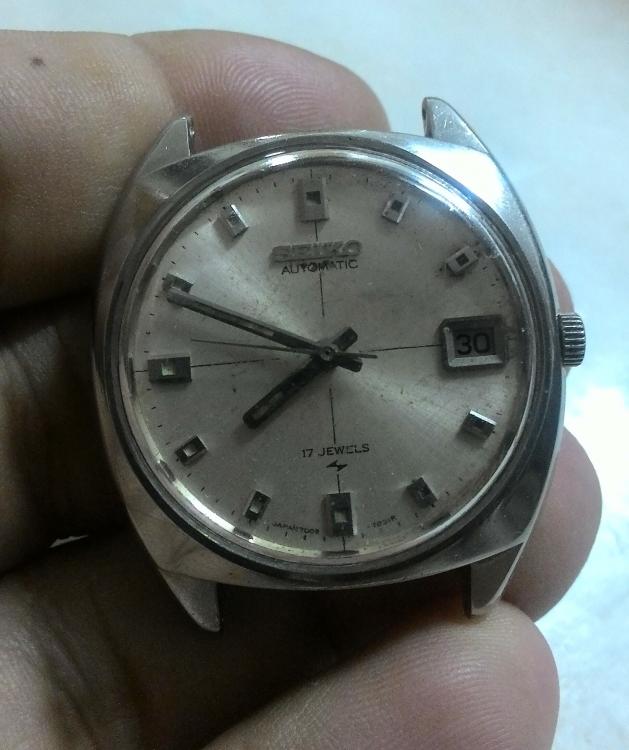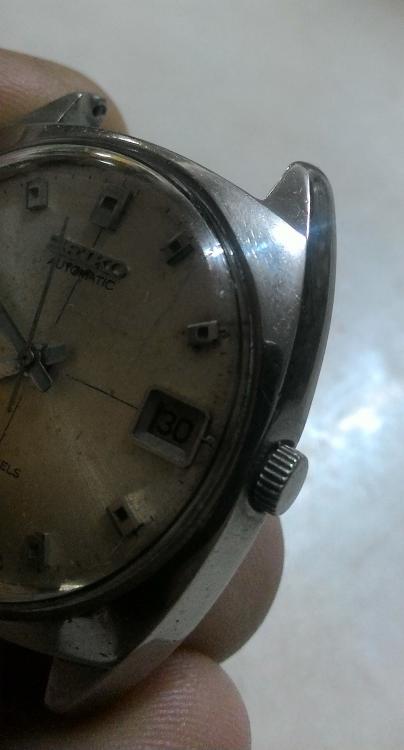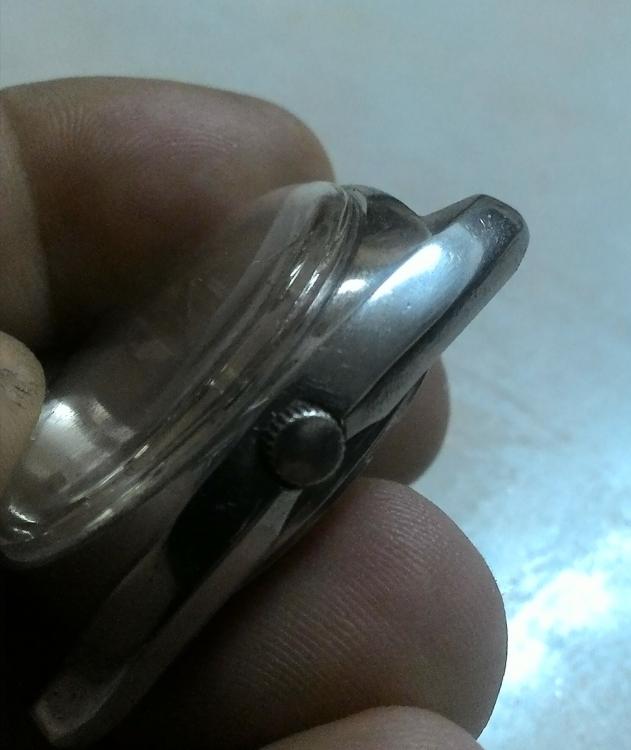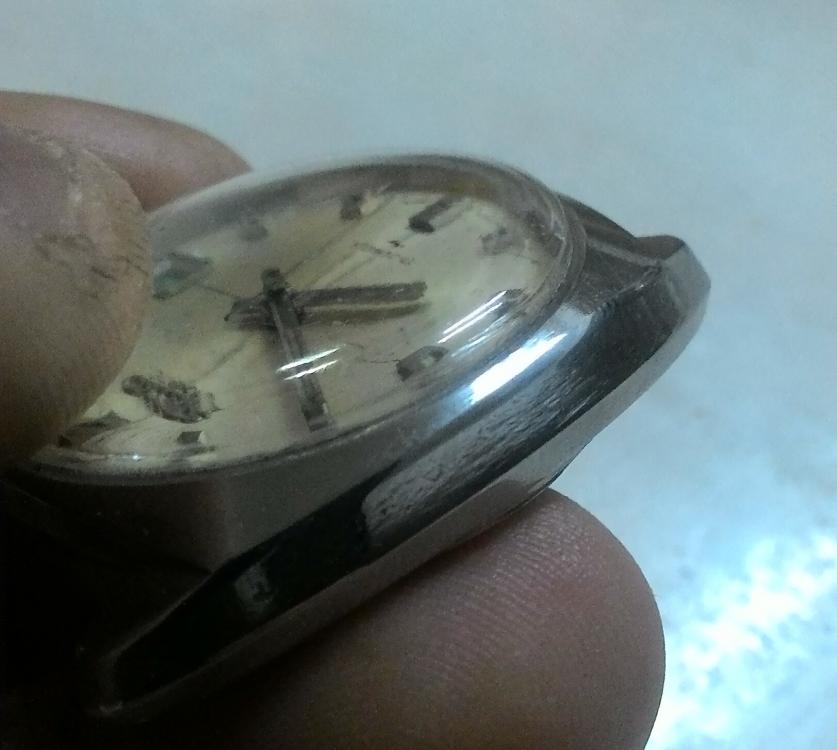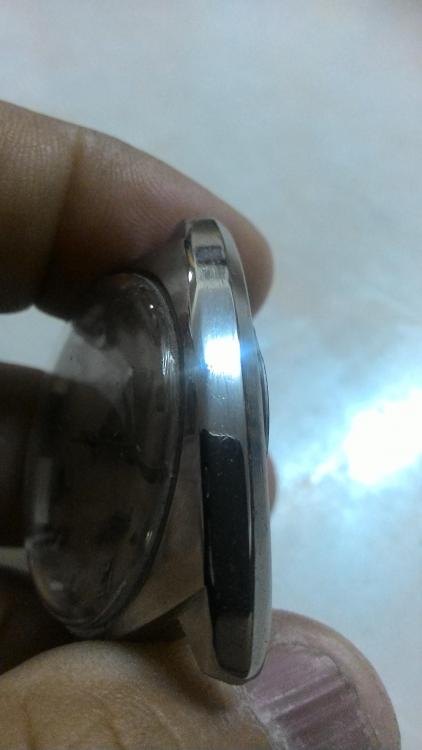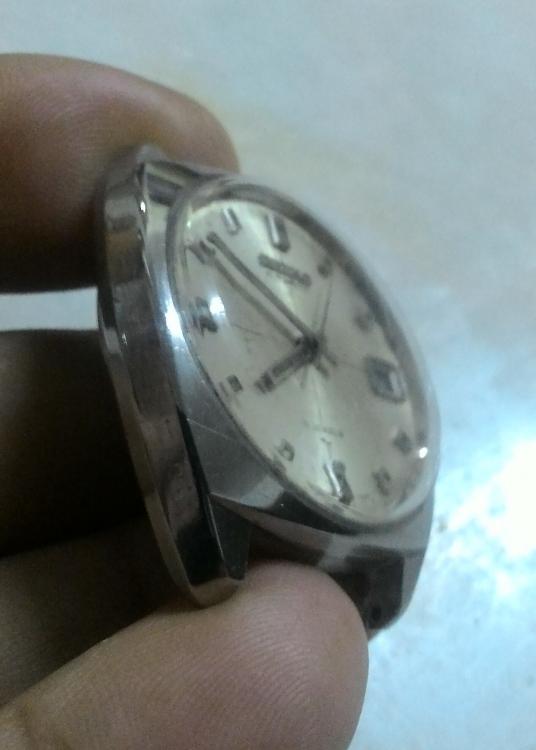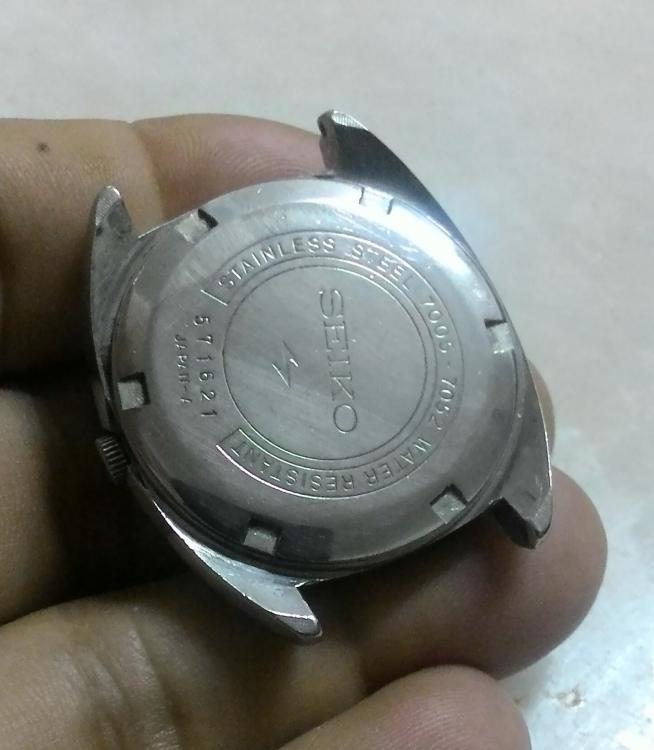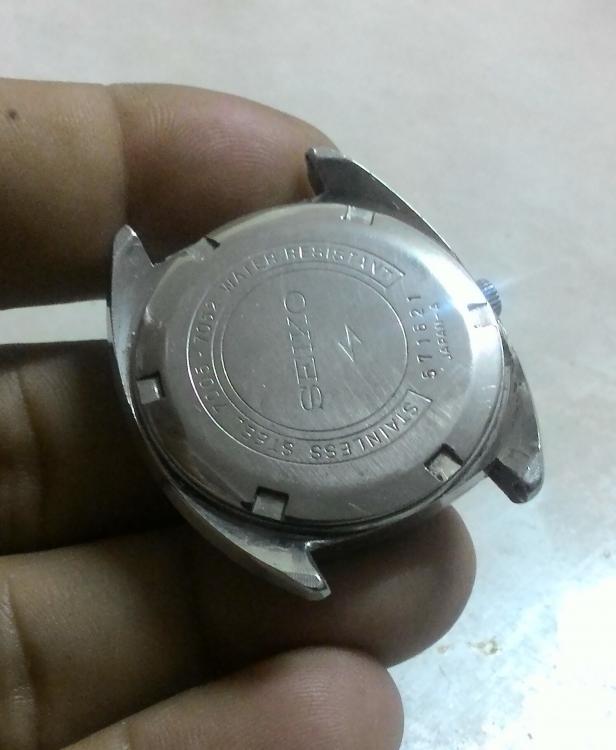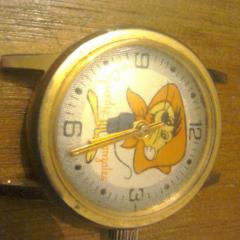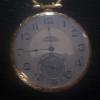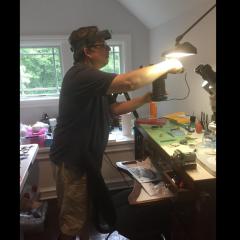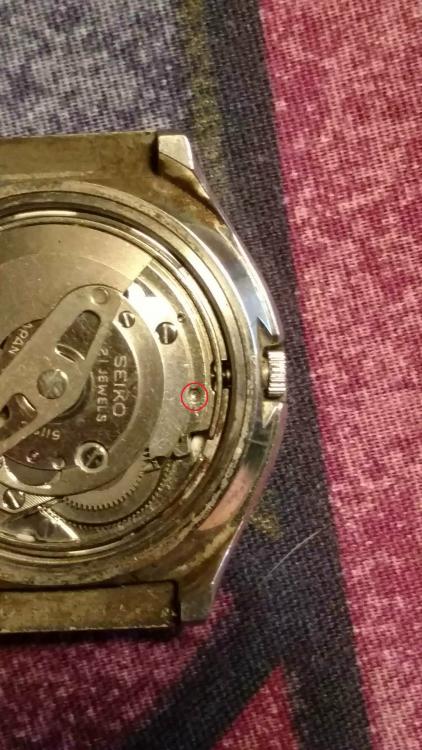Leaderboard
Popular Content
Showing content with the highest reputation on 05/03/17 in all areas
-
Final stage should have been with progressively finer sandpaper but I skipped that and went to the final stage..polishing with Autosol metal polish. And this is the result. The gouge at the one o'clock area is no longer visible (in this pic you can see the badly worn case lug caused by the metal band). The holes on the right side of the case have been reduced to the extent that they're not visible to the naked eye. And the nick at nine o'clock is gone ...a few more pics of the case. Crystal has been polished with autosol as well. The case back cleaned up. Well that's the end if this polishing tale. No power tools were used, if you wish to use them be warned that its all too easy to remove too much material. In this case, by hand-polishing I managed to minimise the damage to the case lines.. not perfect but it could be a lot worse! As a bonus, the watch decided to start working again ! I like to think that this was the watch's way to show that it was happy to be all cleaned up but in reality it was probably just the old oils getting warm and allowing the movement to tick. Hope you enjoyed this write-up. Anilv2 points
-
I would recommend the 1st type in the OP pictures, or any other which has been shown here. That is because with a plates and pillars construction with the pillars not in line with the center of the dies, the plates will tend to open up and the action becomes imprecise, but at least the Horotec in 1st pic has another reinforcement tube.1 point
-
Let me add that I don't think there are kits of quality above mediocre, except maybe for the Bergeon one which manly is for battery changing or bracelet sizing. Just buy what you need separately, according your needs, preferences and budget.1 point
-
Hi Phil, that will do nicely, yes in UK, Cambridgeshire. I will Google those two names and have a look. Thank you Phil. Hi JDM, ok I will do a search as you suggested. Thank you JDM. Regards Johnnie1 point
-
There are many, many threads here answering these questions. Have the patience of browsing this section or use the search box on the top right.1 point
-
Hi Johnnie Im a beginner aswell not sure if your UK based if you are you can get good quality tools from Cousins Uk or HS Walsh,you have Anchor tools made in India are ok to start but good some good brands are Bergeon,A&F and Horotec have a google of these hope it helps Phil Sent from my SM-N910F using Tapatalk1 point
-
Had to chime in on subject of a recent buy and yup it's a Seiko DX, case was unique, (I posted how to remove on repair section), and I'm of the thought that whatever floats your boat. One can usually tell if a case has been polished/ buffed poorly by amateur, (i.e. non factory finish). and there are risks, I will keep this one because of the style and dial, but I could not live with case being as purchased. I could not remove all the nicks, some where too deep. If you are not compromising integrity of case, why not try to make it look new(er)? Buffing or polishing by hand is a chore and time consuming, so efforts should be commended. JMHO1 point
-
Have a look inside the button, sometimes dirt gets packed hard and this can prevent the operating of the date change. Just dirt and lack of oil and grease can cause problems as well.1 point
-
Greetings Virus! See? You're in the right place, you've already gotten some good advice. And you are lucky that you have access to you father's tools! That gives you a great head start.1 point
-
Polish & buffing do different things. Buffing actually moves the metal around and this can remove dings and marks. However you need plenty of room for a decent size " Bench polishing/buffing/machine" Unfortunately I do not have this so I only polish a case with a Proxon tool.1 point
-
No info on the home brew epilame To be clear, the V105 is not an epilame - it's a lubricant of some sort. As far as epilame/FixoDrop is concerned, I found an open, almost full, 100ml bottle on eBay a while back. I paid $50 for it. It should last me a lifetime Keep your eyes open.1 point
-
Fixodrop is stearic acid and shellac dissolved in isopropyl alcohol. It's used for parts like pallet jewels. When you don't want the oil to spread around . On reverse wheels for 2824-2 you could use Lubeta V105 or a very small amount of 9010 in Naptha . And then let i dry. The 9010 recipe is the best i think. I have tried both.1 point
-
Thank you gentlemen. I appreciate the replies. I have had to make my own dies out of delrin before when so haven't been able to find one that would work for my need. I guess I am looking for a quality tool that would offer good options and last. Thanks!1 point
-
Press in the part I've highlighted and pull, the stem and button should come out. I can't see any rust around the stem but its possible it could be further in the movement, you could also put a little oil onto the part of the stem that shows then prop the watch on its side so the oil runs down the stem leave it for a while and see if you can then pull it out.1 point
-
1 point
-
1 point
-
Hello Virus and welcome to this friendly forum. If you intend to become a watch maker/repairer and earn a good living you need an apprenticeship. There are online courses with the BHI, I don’t think you have to attend. I’m retired so I’m not up to scratch on this type of thing. What I can tell you is do not go for one of those crash courses there a waste of money. Back in the early 70’s I undertook an apprenticeship of 5 years then another 2 years as what was called an improver. I spent about 30 years making and repairing watches, but my main interest was high quality antique clocks. One other thing you never stop learning.1 point
-
Here we go with part 2. Now it's easy to note, that I'm not a professional as the cleaning equipment is only... ehm... semi-professional. Special treatment for the balance and the pallet fork. The equipment for oiling and grease. Inserting the new mainspring. Reassembling the train bridge. Surprise: Much easier than on other watches, the parts fall into correct positions by themselves. Nice. Barrel bridge and ratchet system. The keyless works. Assembling and oiling the Pallet fork. The return of the balance. A drop of oil for the balance and escape wheel stones. Winding up and...it runs! Oops, some adjustment needed. Better. Reassembling the automatic device. Inserting the screws for movement and dial. Time for the cannon pinion and the hour wheel. Bringing back dial and hands (oh, I love those Maxi dials). Back in the case... ...and completed with the automatic device. Some grease for the gasket. Got it. It's called a wrist watch, so it's for the wrist not for the safe.1 point
-
I quite often attend the local auction houses near where I live, and at the sale this week was quite a few lots from a retired watchmakers workshop, so I went along to the auction the day before to see what was on offer, There where plenty of watches for sale in mixed bags, all of uncollected watch repairs, One lot caught my eye it was a bag which contained a 1973 Hamilton G10 military watch, there was nothing else of note in the bag of around 20 watches so I noted the Lot number and looked at everything else on offer. One lot describe as a Omega watch was a bit of a dog it was a record military watch which had a Omega Geneve dial replacing the original Record, It is a shame because with the original dial and hands it would have been quite a nice watch to have but as it stood it was neither a Omega or a original Record so not worth a great deal IMHO, I noted the lot number out of interest as I would be attending the sale. Other lots included a Kendrick and Davis staking set which I wanted, A Favorite jeweling set which I also wanted , A few mixed Boxes of tools and spare parts some of which I wanted and a couple of lathes. The lathes on offer where a Coronet Diamond lathe from the 1940's and a IME lathe with around a dozen collets but no draw bar on inspection I could not get the pulleys to turn and with no obvious lock, I think it must have been seized. The coronet was in good condition and turned freely and had no play in the bearings and came with a motor I noted the lot numbers and resolved to return the next day for the auction. The auction started at 12:00 o'clock Having attended the auction quite a few times the first lot I wanted was lot 196 at roughly 150 lots a hour I thought I would get there about 1 o'clock and have a short wait for the first lot I wanted. Sadly the auctioneer was working faster than usual and I got there at lot 209. I did get there in time to see the franken Omega/record watch come up it went to a telephone bidder for what i thought was a staggering price of £245.00 before commission. So I waited a hour for my next lots to come up, I got the staking set for £40.00 and the Jeweling set for £40.00 which I was very happy with. The Lathes came up next, I have wanted a lathe for quite sometime but only want one to practice and experiment with at the moment so I thought if I can get the coronet cheap I will give it a go. The bidding started at £10.00 so I thought not much interest I will bid, I got the lathe for £40.00 too, the IME went for £90.00. The next lot I wanted was a box of tool's, on the viewing day I had looked through it contained quite a few small boxed tools, such as a pinion puller roller remover and Bergeon crystal lifter a couple of vices taps and dies, and various other useful tools, so I got that for £60.00. The thing with auctions and boxed lots is you have to be careful because when I collected the box at the end of the auction half of what I had seen in the box the day before was missing, I suspect because there where a number of open boxes someone had taken all the useful tools and placed them into a different box at the viewing to make up one very good box to bid on, ideally with boxed lots you need to view just before the auction starts.The only saving feature of the box I now had is that it contained some Georgian Guinea weights and I should be able to recoup the money for the box just from those. The Coronet lathe I now own came with one solitary collet and a motor, I have bought this just to experiment with and don't intend to throw money at it, I would just like to get used to using a lathe, so I will get the electrician at work to rewire and PAT test the motor although it does work the wire has been wrapped with insulation tape. I do though have a couple of questions that someone I'm sure could answer, What oil should I use for the bearings on the head stock ?. I also intend to buy a few individual collets to get me started, the one that came with the lathe is 35.8 mm long 7.94 mm wide and is stamped on the top with two back to back c's the collet is also stamped 2807, which type of 8 mm collet is this and which ones do I need to look out for to fit this lathe. Wayne1 point




